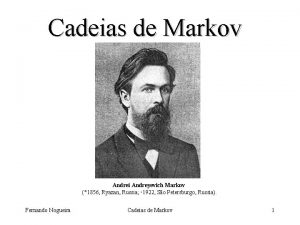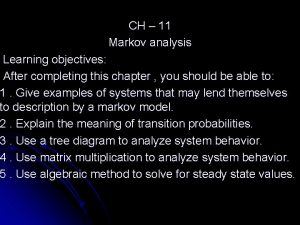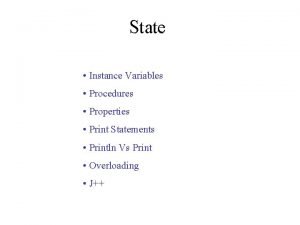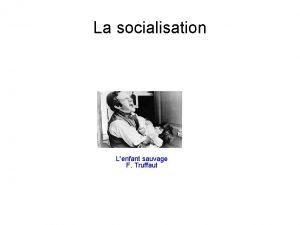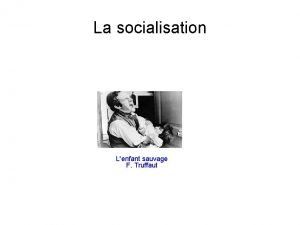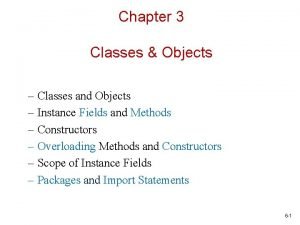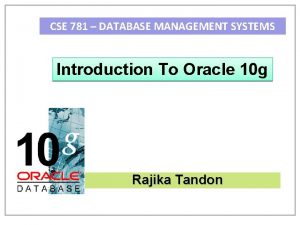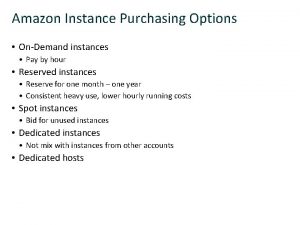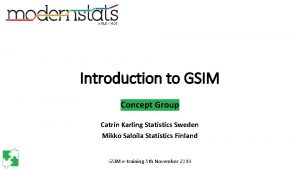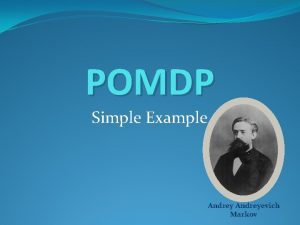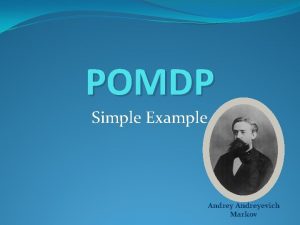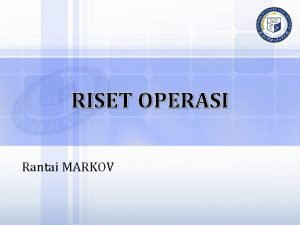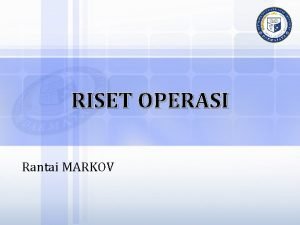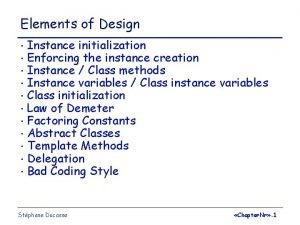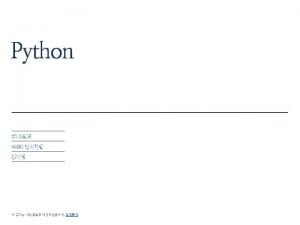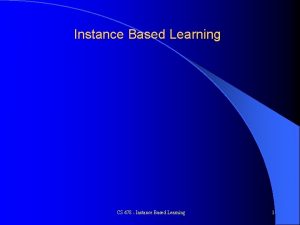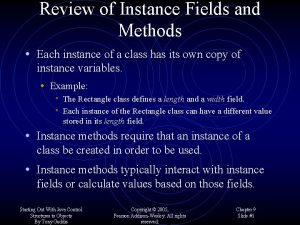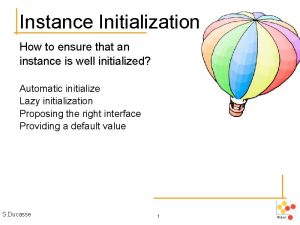POMDP Simple Example Andreyevich Markov POMDP Instance general


















- Slides: 18

POMDP Simple Example Andreyevich Markov

POMDP – Instance general description Problem description: A robot is situated in the following course: S={ S 1, S 2, S 3 } However, it cannot tell in which state it starts.

Instance parameters – The actions set: Move clockwise Stay put Activate colour sensor A={ am, as, ac } => am => as => ac

Instance parameters – The score function: R(s, a) The (immediate) reward for doing a A at state S. R( S 2, as )= R( S 3, as )=-1 R( S 1, as )=+1 R( S 1, ac )=R( S 2, ac )=R( S 3, ac )=-0. 1 R( S 1, am )=R( S 2, am )=R( S 3, am )=0 * We will use γ=0. 5

Instance parameters – The traverse function The transition function: Tr(s, a, s’) The probability to reach s’ from s using a. Tr(S 1, am, S 2)=0. 9 Tr(S 2, am, S 3)=0. 9 Tr(S 3, am, S 1)=0. 9 Tr(S 1, am, S 1)=0. 1 Tr(S 2, am, S 2)=0. 1 Tr(S 3, am, S 3)=0. 1 Tr(S 1, am, S 3)=0 Tr(S 2, am, S 1)=0 Tr(S 3, am, S 2)=0 Tr(S 1, as, S 1)=1 Tr(S 2, as, S 2)=1 Tr(S 3, as, S 3)=1 Tr(S 1, as, S 2)=Tr(S 1, as, S 3)=0 Tr(S 2, as, S 3)=Tr(S 2, as, S 1)=0 Tr(S 3, as, S 1)=Tr(S 3, as, S 2)=0 Tr(S 1, ac, S 1)=1 Tr(S 2, ac, S 2)=1 Tr(S 3, ac, S 3)=1 Tr(S 1, ac, S 2)=Tr(S 1, ac, S 3)=0 Tr(S 2, ac, S 3)=Tr(S 2, ac, S 1)=0 Tr(S 3, ac, S 1)=Tr(S 3, ac, S 2)=0

Instance parameters – The observation set & function The observations set: Black observation Red observation Ω={ ob, or } => ob => or The observation function: O(s, a, o) The probability to observe o Ω after doing a and reaching s O(S 1, am, ob)=O(S 1, am, or)=0. 5 O(S 2, am, ob)=O(S 2, am, or)=0. 5 O(S 3, am, ob)=O(S 3, am, or)=0. 5 O(S 1, as, ob)=O(S 1, as, or)=0. 5 O(S 2, as, ob)=O(S 2, as, or)=0. 5 O(S 3, as, ob)=O(S 3, as, or)=0. 5 O(S 1, ac, or)=0. 8 O(S 2, ac, ob)=0. 8 O(S 3, ac, ob)=0. 8 O(S 1, ac, ob)=0. 2 O(S 2, ac, or)=0. 2 O(S 3, ac, or)=0. 2

Calculations – notes Notation - the belief states probabilities: We will use the following notations: P(s 1)=p P(s 2)=q P(s 3)=1 -p-q b={P(s 1)=p, P(s 2)=q } (short for (p, q, 1 -p-q). Notation - the next belief state: We will use the following notation: for the resulting belief state (i. e. the next belief state) after applying action a at the belief state b and observing o. Start state: We start at the belief state: bi={P(s 1)=⅓, P(s 2)=⅓ }.

1 step policy schema: Concrete policies: The belief state value function: The initial belief state value:

The belief state value function (1 -step)

2 steps policy – 1 st round schema: Concrete policy (1 out of 27): The belief state value function: The initial belief state value:

Calculations – The new belief state & observations probabilities We will calculate: a) b)

Calculations – Ob new belief state & probability

Calculations – Ob new belief state & probability (con’t)

Calculations – Or new belief state & probability

Calculations – Or new belief state & probability (con’t)

Calculations – The belief state value function

2 steps policy – 1 st round schema: Concrete policy (1 out of 27): The belief state value function: The initial belief state value:

The belief state value function (2 -step)
 Andrei andreyevich markov
Andrei andreyevich markov Case based reasoning python
Case based reasoning python Example of markov analysis
Example of markov analysis Markov analysis hr
Markov analysis hr Instance variables
Instance variables Instance de socialisation
Instance de socialisation Enfant sauvage socialisation
Enfant sauvage socialisation Instance weighting for domain adaptation in nlp
Instance weighting for domain adaptation in nlp Hadoop web services
Hadoop web services Table instance chart
Table instance chart Instance of class
Instance of class Interlockedmin
Interlockedmin Schema vs instance
Schema vs instance Dicom structured report
Dicom structured report Database instance in dbms
Database instance in dbms Ec2 instance purchasing options
Ec2 instance purchasing options Instance based learning in machine learning
Instance based learning in machine learning Instance meaning
Instance meaning Oracle instance architecture
Oracle instance architecture
